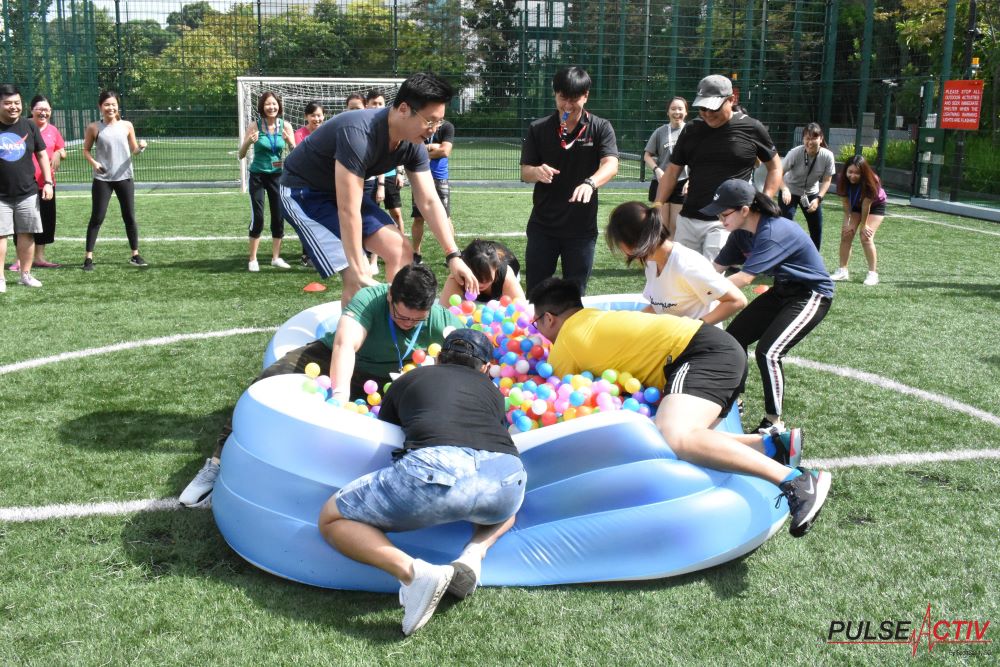How to Ensure Everyone Stays Energized at Your Corporate Team Building Event and What Happens if They Don’t
Corporate team-building events are designed to foster collaboration, boost morale, and create lasting memories. However, the effectiveness of these events can be significantly diminished if participants become tired and drained. Fatigue can turn what should be an exciting and productive day into a slog, leaving employees disengaged and less likely to absorb the intended benefits. In this article, we’ll explore strategies to keep energy levels high throughout your event and discuss the potential consequences if fatigue sets in.
1. Plan a Balanced Schedule
- Variety is Key: Incorporate a mix of physical, mental, and creative activities to keep participants engaged without exhausting them. Alternate between high-energy tasks and more relaxed ones to allow natural recovery periods.
- Pacing: Avoid cramming too many activities into a short period. Spread out the event over a full day or even a couple of days if necessary, with plenty of breaks in between sessions.
2. Incorporate Breaks and Rest Periods
- Strategic Breaks: Schedule regular breaks where participants can rest, hydrate, and recharge. Short 10-15 minute breaks every hour or two can significantly reduce fatigue.
- Mindful Relaxation: Consider incorporating brief relaxation activities such as guided meditation, breathing exercises, or simple stretches to help participants unwind and rejuvenate.
3. Nutrition and Hydration
- Healthy Snacks: Provide nutritious snacks and meals that fuel energy rather than cause post-lunch slumps. Avoid heavy, greasy foods that can lead to fatigue.
- Hydration Stations: Ensure there’s ample access to water and encourage participants to stay hydrated throughout the event. Dehydration is a major cause of tiredness.
4. Engage with Energizing Activities
- Interactive Games: Activities that involve movement, teamwork, and a bit of friendly competition can keep energy levels high. However, balance is key—choose games that are fun but not overly strenuous.
- Motivational Sessions: Incorporate motivational talks or team challenges that inspire and energize participants. This can help reignite enthusiasm and focus if energy starts to dip.
5. Consider the Timing
- Optimal Start Times: Starting too early in the day or running too late into the evening can be draining. Consider the natural energy levels of your participants and schedule activities during times when they’re likely to be most alert.
- Avoid Midday Lulls: Be mindful of the post-lunch energy dip and plan lighter or more engaging activities during this period to keep participants engaged.
6. Adapt to Participant Feedback
- Responsive Planning: Be flexible and ready to adjust the schedule based on how participants are feeling. If you notice that energy levels are dropping, consider cutting back on more demanding activities or introducing additional rest periods.
- Open Communication: Encourage participants to share how they’re feeling throughout the event. This can help you make real-time adjustments to keep everyone feeling their best.
What Happens if Participants Become Tired?
Despite your best efforts, there’s always a possibility that participants might become tired. It’s crucial to understand the implications of fatigue and how to address it if it occurs.
1. Decreased Engagement
- Reduced Participation: Fatigue often leads to disengagement. Tired participants may withdraw, participate less actively, or even skip activities altogether. This can diminish the overall effectiveness of the event.
- Lowered Morale: When energy levels drop, so does morale. Participants may become irritable or less enthusiastic, which can negatively impact team dynamics and the overall atmosphere of the event.
2. Cognitive Impairment
- Impaired Decision-Making: Fatigue can affect cognitive functions such as decision-making, problem-solving, and creativity. This can be particularly detrimental if the event involves strategic or brainstorming activities.
- Increased Errors: Tired participants are more likely to make mistakes, which can lead to frustration and decreased confidence in their abilities.
3. Physical Exhaustion
- Increased Risk of Injury: If physical activities are part of the event, fatigue can increase the risk of accidents and injuries. Participants may be less coordinated, less aware of their surroundings, and slower to react.
- Health Concerns: Prolonged fatigue can lead to more serious health issues such as headaches, dizziness, or even fainting, especially if participants are not adequately hydrated or nourished.
4. Long-Term Impact
- Negative Associations: If participants leave the event feeling tired and drained, they may associate team-building activities with exhaustion rather than enjoyment. This can make them less likely to engage in future events.
- Reduced ROI: A fatigued and disengaged team is less likely to retain the lessons and benefits of the event, resulting in a lower return on investment for the company.
Conclusion
Ensuring that participants stay energized and engaged throughout your corporate team-building event is essential for its success. By carefully planning a balanced schedule, incorporating breaks, providing nutritious meals, and being responsive to participants’ needs, you can create an event that is not only enjoyable but also productive. On the other hand, neglecting these aspects can lead to fatigue, which diminishes the event’s effectiveness and can have long-lasting negative impacts on your team.
Remember, the goal of a team-building event is to strengthen bonds and enhance collaboration, not to exhaust participants. By keeping energy levels high, you can ensure that everyone leaves the event feeling refreshed, motivated, and ready to apply what they’ve learned to their daily work.
To head back to read another article in our blog, click here.

